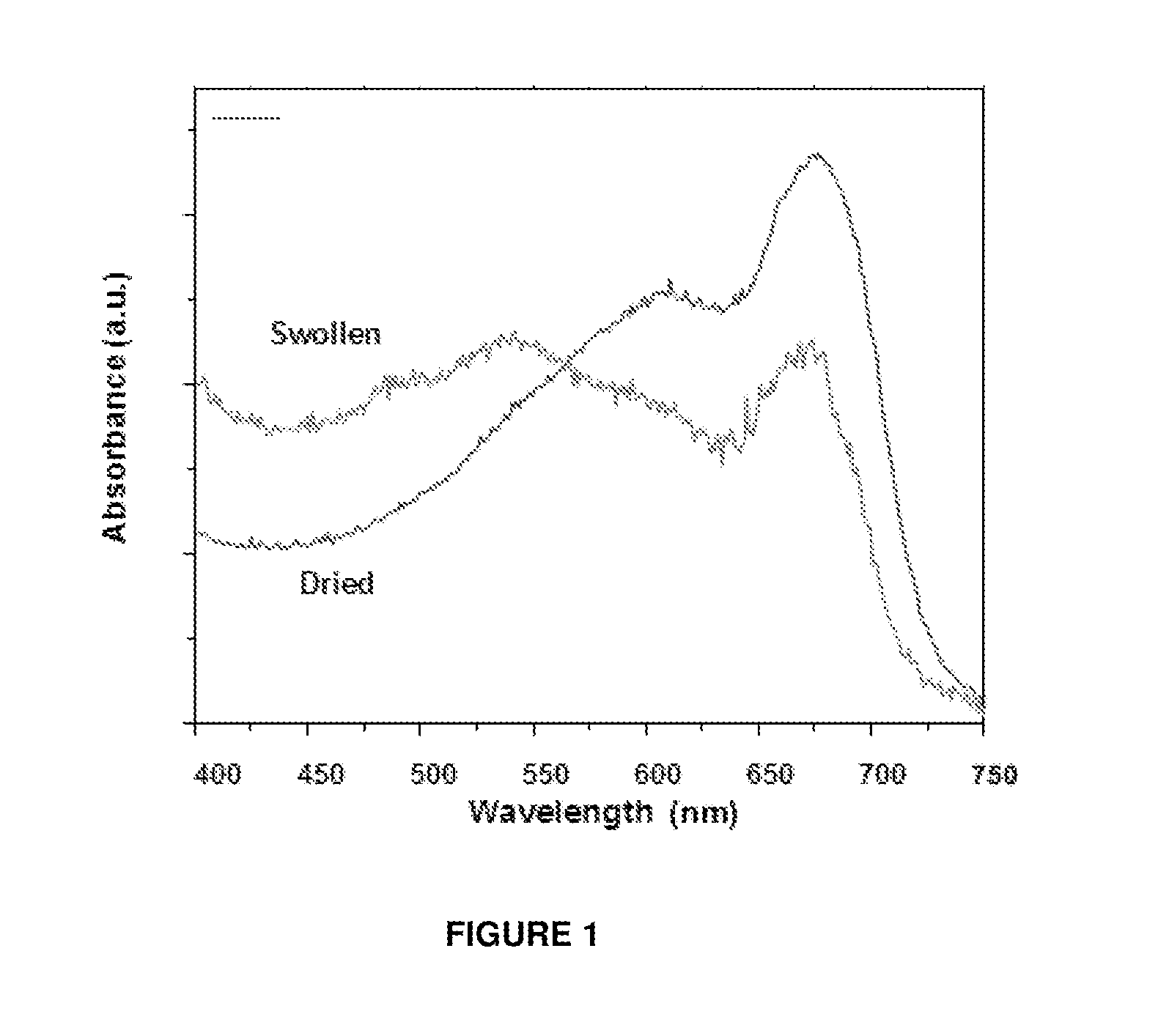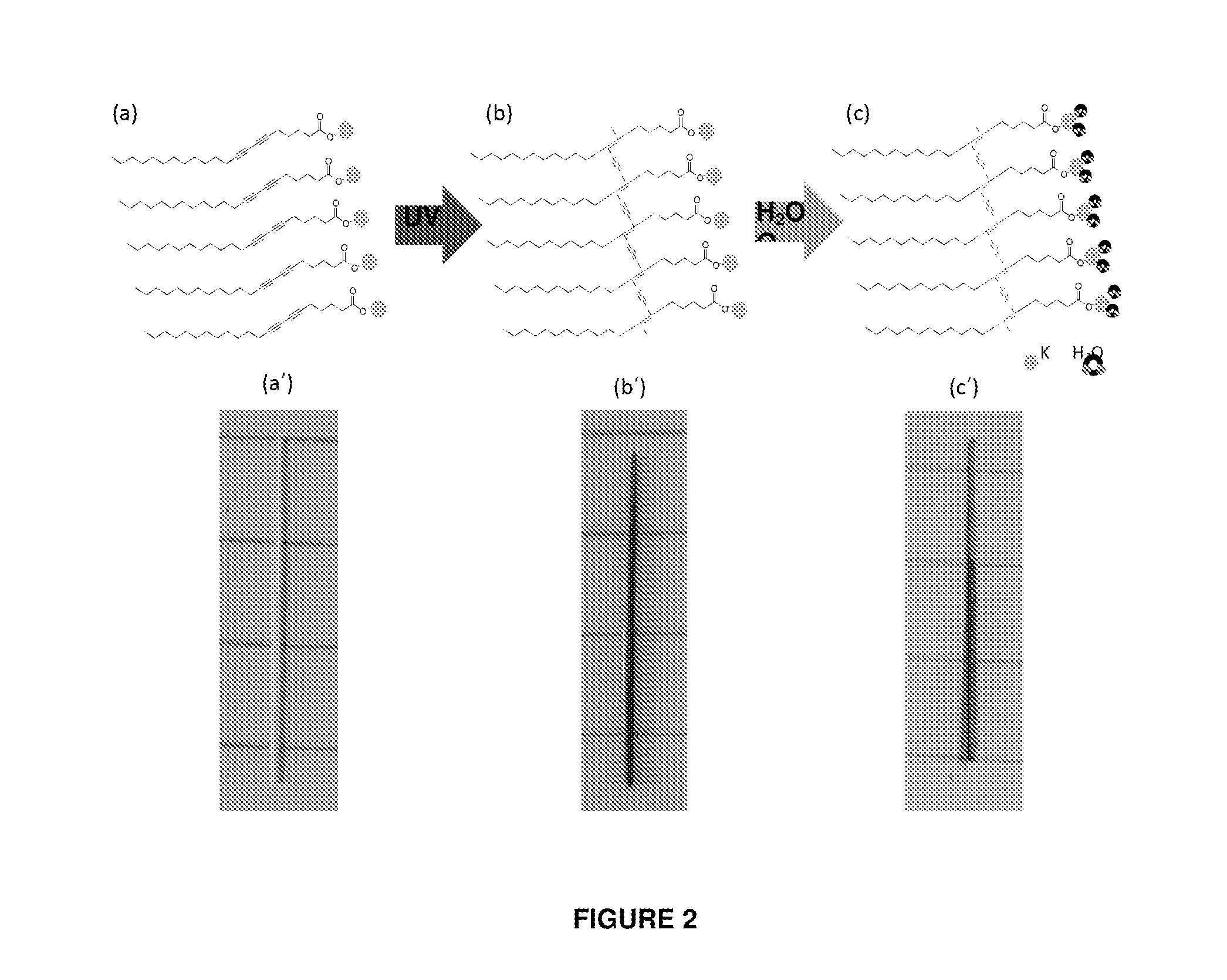Polydiacetylene water sensors
a technology of polydiacetylene and water sensors, applied in the direction of moisture content investigation, material nanotechnology, coatings, etc., to achieve the effect of small dimension
- Summary
- Abstract
- Description
- Claims
- Application Information
AI Technical Summary
Benefits of technology
Problems solved by technology
Method used
Image
Examples
example 1
Synthesis of Diacetylene Monomer
[0071]All solvents were purchased from Sigma-Aldrich. 10,12-pentacosadiynoic acid (PCDA) was purchased from GFS Chemicals. Oxalyl chloride and alginic acid were obtained from Acros Organics. 5-aminoisophthalic acid, lithium hydroxide, sodium hydroxide, potassium hydroxide and calcium chloride were purchased from Sigma-Aldrich.
[0072]To a solution containing 1.00 g (2.67 mmol) of PCDA in 20 mL of methylene chloride was added dropwise 0.81 g (8.01 mmol) of oxalyl chloride and a catalytic amount of DMF at room temperature. The resulting solution was stirred at room temperature for 2 hours, concentrated in vacuum, giving a residue which was re-dissolved in 10 mL of methylene chloride. The resulting solution was added dropwise to a solution containing 0.58 g (3.20 mmol) of 5-aminoisophthalic acid in 15 mL of pyridine. The resulting mixture was stirred for 12 h at room temperature and poured into cold water to yield a precipitate containing the desired diace...
example 2
Preparation of Nanofiber Suspension
[0073]PCDA-IPA (80.65 mg) is cotton-filtered to make unpolymerized white powder added to a 15 ml of 20 mM LiOH (NaOH or KOH) solution. The mixture solution was heated to 90° C. with stirring until the PCDA-IPA is completely dissolved in LiOH (NaOH or KOH) solution, and the final resulting solution appears to be transparent. The resulting solution was stored in refrigerator for overnight.
example 3
Preparation of PDA Fiber Embedded Alginate Hydrogel
[0074]10 mM PCDA-IPA / Li fiber nanofiber suspension of Example 2 was homogeneously mixed with 4% alginic acid solution in a 20 ml vial. To the solution, 2% calcium chloride solution is added to generate crosslink gel, than stirring was continued at room temperature for 30 min to crosslink fully. After stirring, the hydrogel is washed with DI water for 3 times. The hydrogel is placed on a substrate, and is dried at 40° C. for 2 hours in an incubator. Then, the dried hydrogel is photo-polymerized under 254 nm UV light until the blue color develops.
PUM
 Login to View More
Login to View More Abstract
Description
Claims
Application Information
 Login to View More
Login to View More - R&D
- Intellectual Property
- Life Sciences
- Materials
- Tech Scout
- Unparalleled Data Quality
- Higher Quality Content
- 60% Fewer Hallucinations
Browse by: Latest US Patents, China's latest patents, Technical Efficacy Thesaurus, Application Domain, Technology Topic, Popular Technical Reports.
© 2025 PatSnap. All rights reserved.Legal|Privacy policy|Modern Slavery Act Transparency Statement|Sitemap|About US| Contact US: help@patsnap.com



